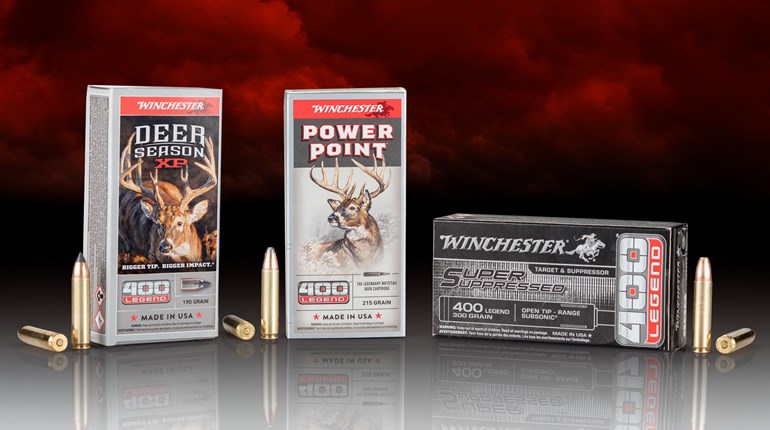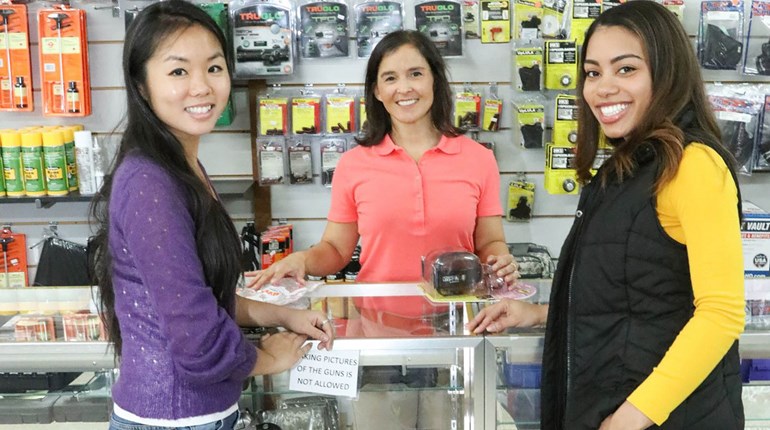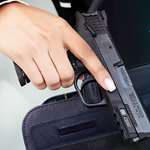
Choosing ammo for hunting big game can be as simple or as complicated as you want it to be. Whether you buy the box with a picture of an elk on it or you take a deep dive into the construction of the projectile and the ammo as a whole, you should understand a few basic things about how rifle hunting ammunition works.
First, a hunting cartridge has one priority: Dropping a big-game animal reliably. Its ability to do that is determined by four things, in no real order: Precision, velocity, penetration and expansion.
Accuracy and Precision
Accuracy and precision, though related, are not the same thing. Accuracy is how close a measurement is to its true or accepted value; precision is how close measurements of the same size are to each other. In ballistics, precision refers to the size of your group on paper—how close together this ammo shoots out of your particular rifle. Accuracy refers to how close that group is to where you wanted it to be or where your crosshairs were aiming.
Accuracy is a function of a lot of things, but it’s mostly about how you use your equipment and how good of a shooter you are. Precision is a function of the quality of the rifle and the ammunition. To say a rifle is accurate is a bit of a misstatement, because what you really mean is that the rifle is precise. That is, it is capable of putting its shots in the same spot every time (where that spot is is a matter of accuracy—you doing your part).
The rifle has a lot to do with precision, of course, but when it comes to ammunition, precision is a matter of manufacturing materials and tolerances, and some projectiles are inherently more precise than others because of their shape and weight (and thus their ballistic coefficient). Manufacturing tolerances matter a lot here, because bullets that are cast off-center even slightly will begin to wobble and fly off course at long enough range. Berger Bullets states it this way: “To achieve precision with a projectile that’s spinning at over 100,000 RPM, mass balance is essential. Mass balance is driven by the concentricity of the jacket. In other words, the copper jacket needs to be the same thickness all the way around, so the heavy lead core is centered on the spin axis. Anywhere the jacket is thicker or thinner introduces a mass imbalance, that creates dispersion right out of the muzzle.”
Ammo that is manufactured to tighter tolerances is called match-grade, because it’s designed for competition (match) shooting. You generally don’t need this extreme precision for hunting, and any quality hunting ammo on the market today will have the precision you’re looking for at normal hunting ranges.
Velocity
How fast a projectile is traveling is its velocity, and higher velocities affect trajectory and wind drift, which is why long-range shooters like fast bullets—their arc of travel is less pronounced. Like precision, velocity is a function of many factors built into the rifle and the cartridge. Lighter projectiles can be pushed to faster velocities, but too fast isn’t always a good thing. You must balance velocity with the other components. Bullets are designed to expand within a given range of impact velocities, but push them too fast and they can come apart and fail to do their job of penetration and expansion.
In general, faster projectiles have a flatter trajectory, which makes them better for longer ranges, and they tend to have better performance on game—at least up to the point they were designed to function at. That said, big, slow bullets have legions of fans, because they can be very good (at hunting ranges) at penetration and expansion.
Penetration
There are two ways to quickly kill a big-game animal with a bullet: incapacitate its central nervous system with a shot to the brain or spine, or punch big holes in a vital organ to cause fatal shock and trauma. We don’t generally advocate brain/spine shots because they are small targets, so vital organs it is. That means a bullet needs to be able to punch through hide, muscle, blood, tissue and often bone in order to reach a vital organ before it can be counted on for an effective kill.
Heavier bullets will carry more energy and are appropriate for heavier animals. They’ll be slower, so you’ll sacrifice velocity and the flatter trajectories that come with it, but unless you’re shooting at 300 yards and beyond, this isn’t a concern for most hunters.
Ammo manufacturers use a variety of bullet constructions—ballistic tip, all copper, bonded, etc.—to make bullets that fly straight, penetrate reliably and expand effectively. But penetration has to be balanced with expansion, or a bullet will zip right through an animal and waste much of its energy.
Expansion
Generally speaking, most big-game hunting ammo is loaded with a projectile that’s designed to expand and greatly increase the amount of trauma and tissue damage it is able to impart. The right amount of expansion is important: If a bullet expands too much, it won’t penetrate as deeply, and if it doesn’t expand enough, it will penetrate too deeply without doing as much damage as it should have on the way through.
How it works: Upon impact, the front part of the bullet rapidly begins to expand by peeling back or smushing onto itself, to create a larger wound channel, while the back portion of the bullet keeps its shape and retains its weight in order to keep driving penetration. This creates a bullet that looks like a mushroom or a flower when it is done expanding.

Norma-ammunition.com image: A soft-nose constructed bullet going through different stages of expansion.
The design of the bullet itself is what determines how it will expand. Expansion happens because the front of the bullet is weakened by impact; a hole in the front of the bullet (a “hollow point” or leaving the lead core exposed (a “soft point”) can accomplish this, and engineers have all sorts of other tricks up their sleeve to make a bullet expand while continuing to penetrate. Some bullets are even designed to fragment upon contact with soft tissue (vitals), but these do not punch through bone and can be unreliable on larger game, so their use is mostly best kept to varmints.
Velocity affects expansion. The faster the bullet is flying when it hits the animal, the more violent the expansion will be, and the manufacturer of the ammo has already balanced these two aspects for you.
A Balancing Act
When picking out big-game hunting ammo, you need enough precision that you can be sure the projectile will hit the target if you do your part. That level of precision at hunting ranges is a given in quality hunting ammo on the shelves these days. Then you need to balance velocity, penetration and expansion so the projectile flies the way you want it to and performs reliably on big game—punching holes through vital organs, expanding and creating massive wound channels that lead to quick, effective kills. Engineers have done the balancing work for you when it comes to factory ammo, and it’s important to know what you’re buying. If you plan to hunt deer with a .223 Rem. (yes, it’s very effective under the right circumstances), you’d better be sure you’re buying ammo designed to work on deer and not the lighter versions designed to hunt varmints. The design and weight of the bullet will make a huge difference in performance.















































